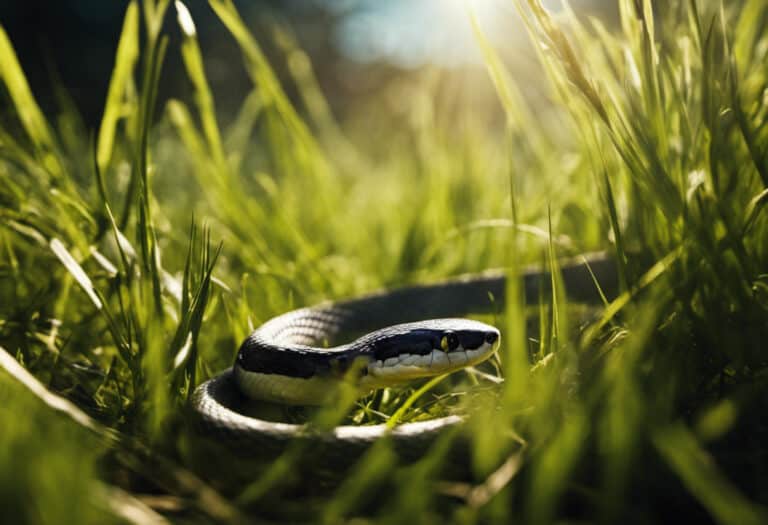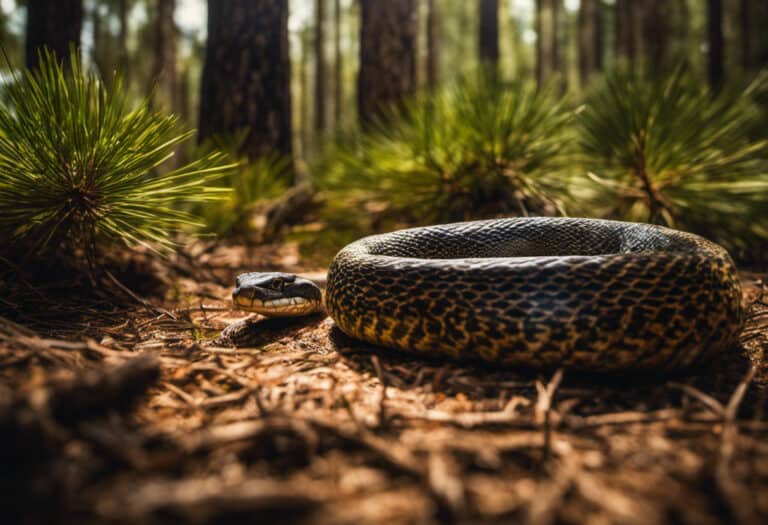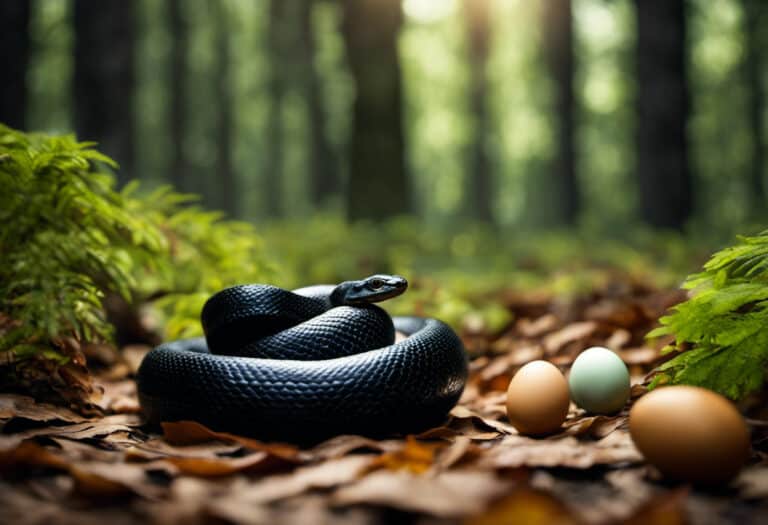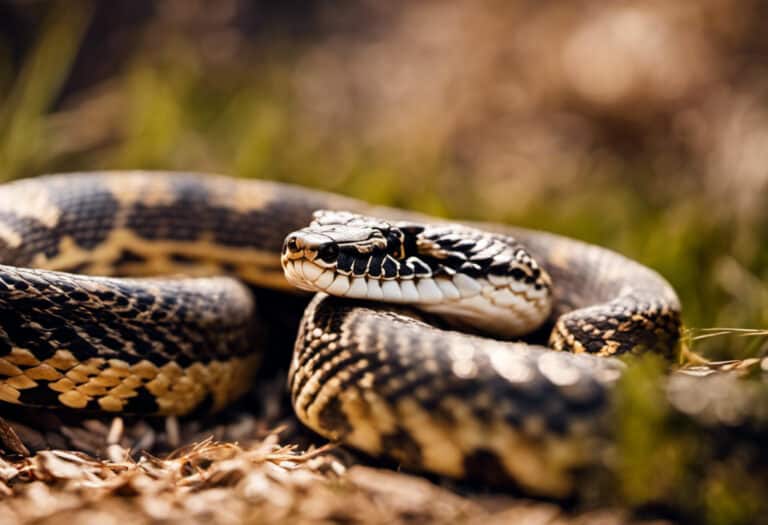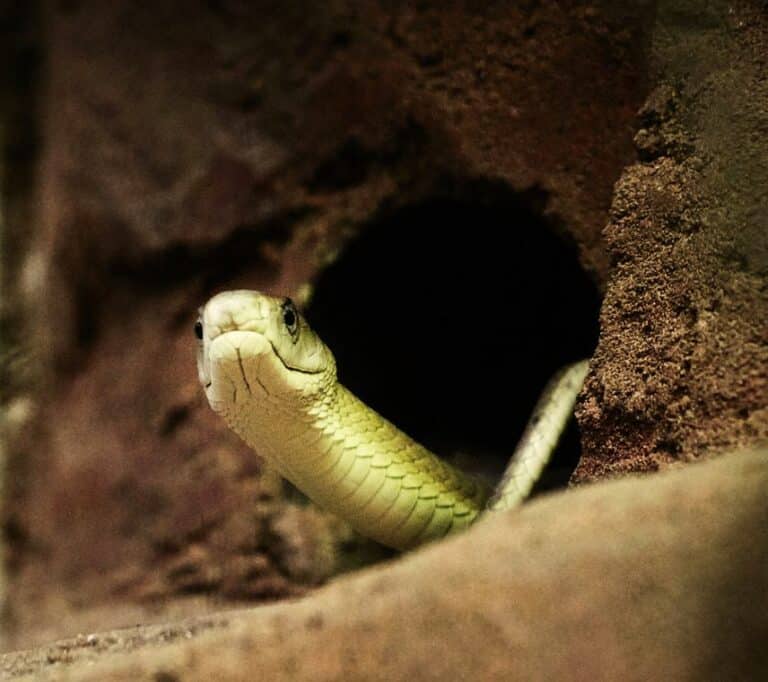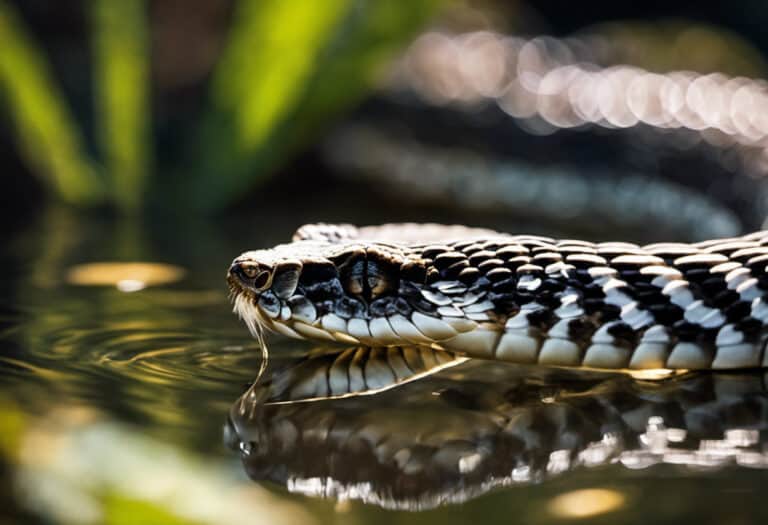When Do Snakes Lose Their Skin?
Do you ever wonder when snakes shed their skin? Well, get ready to uncover the fascinating process in this informative article.
Snakes shed their skin for various reasons, and understanding the timing and factors behind it is essential for their care.
From tight and worn-out skin to rapid growth and reproductive cycles, there’s much more to shedding than meets the eye.
So, let’s dive into the captivating world of snakeskin shedding and gain a deeper appreciation for these incredible creatures.
Key Takeaways
- Snakes shed their skin because it doesn’t fit anymore or is old or worn out.
- Factors influencing shedding include species, age, weather, temperature, nutritional health, and the presence of bacteria or parasites.
- Shedding helps remove parasites that could harm the snake.
- Snakes rub against rocks, trees, or similar surfaces to start shedding.
Frequency of Shedding for Snakes
Snakes typically shed their skin a few times a year, but younger snakes shed more frequently due to their growth.
Various factors influence the frequency of shedding. Species, age, weather, temperature, nutritional health, and the presence of bacteria or parasites can all affect how often a snake sheds its skin.
These factors determine the overall health and condition of the snake, which in turn impacts its shedding frequency.
Additionally, some methods can facilitate the shedding process for snakes. Snakes often rub against rocks, trees, or other surfaces to initiate shedding.
Some snakes can even shed their skin in water. By rubbing against abrasive surfaces, snakes can tear open the outer layer of their skin and slide out of the old skin.
These methods help facilitate a successful shedding process for snakes.
Factors Influencing Snake Skin Shedding
Factors influencing snake skin shedding include:
- Various environmental factors, such as temperature, humidity, and weather conditions.
- The snake’s nutritional health plays a crucial role in the shedding process.
- Different snake species and their age can also impact the frequency and ease of shedding.
Environmental Factors Affecting Shedding
For shedding to occur correctly, you must provide snakes with the appropriate environmental conditions, such as temperature and humidity.
The role of temperature in snakeskin shedding is crucial. Snakes are ectothermic animals, meaning their body temperature is regulated by the environment.
Temperature directly affects their metabolic rate and overall health. Shedding may be delayed or incomplete when the temperature is too low, leading to retained skin or other complications.
On the other hand, shedding may occur too quickly when the temperature is too high, resulting in incomplete shedding or damaged skin.
Maintaining a suitable temperature range for your snake species is essential for successful shedding. Refer to the table below for common snake species’ optimal temperature and humidity levels.
| Snake Species | Temperature Range (°F) | Humidity Range (%) |
|---|---|---|
| Corn Snake | 75-85 | 40-60 |
| Ball Python | 80-90 | 50-60 |
| Boa Constrictor | 80-90 | 50-70 |
Remember to provide a temperature gradient within the enclosure, allowing the snake to choose its preferred temperature.
Maintaining the appropriate humidity levels is essential, as insufficient humidity can result in dry, difficult-to-shed skin.
By carefully monitoring and adjusting the environmental conditions, you can help ensure proper shedding for your snake.
Role of Nutrition in Shedding
Ensuring your snake receives a balanced diet with proper nutrition is essential for healthy shedding. The role of diet plays a significant role in the overall health and skin quality of snakes.
A diet that lacks essential nutrients can negatively impact the shedding process and result in poor skin quality. Snakes require a diet of various prey items, including mice, rats, and other small animals.
These prey items provide the necessary vitamins, minerals, and protein that snakes need to maintain healthy skin. A diet deficient in these nutrients can lead to incomplete shedding, dry and dull skin, and increased susceptibility to skin infections.
Therefore, providing your snake with a well-balanced diet is crucial to ensure proper shedding and optimal skin health.
Differences in Shedding Frequency
You may wonder why some snakes shed their skin more frequently than others. It all comes down to factors affecting shedding frequency in different snake species.
Here are three key factors that play a role in shedding patterns:
- Species: Different snake species have different shedding frequencies. Some snakes shed their skin as often as once a month, while others shed only a few times a year.
- Age: Younger snakes shed more frequently than adults due to rapid growth and development.
- Environmental factors: Weather, temperature, nutritional health, and bacteria or parasites can also influence shedding frequency in snakes.
Understanding these factors can help us comprehend the fascinating world of snake shedding and appreciate the intricate balance of nature.
Importance of Shedding for Snakes
Shedding is crucial for snakes as it allows them to:
- Remove old or worn-out skin
- Accommodate their growing bodies
During shedding, snakes also have the opportunity to:
- Please get rid of parasites that may harm their health
This process plays a vital role in:
- Maintaining the overall well-being and growth of snakes
- Ensuring their ability to thrive in their environment.
Necessity of Shedding
When snakes shed their skin, it helps remove harmful parasites and allows their continued growth.
The benefits of shedding and shedding patterns in different snake species are as follows:
- Shedding removes parasites: Snakes shed their skin to eliminate parasites that could harm their health. This process helps keep them free from infestations and infections.
- Growth facilitation: As snakes grow, their skin does not, so they must shed it to accommodate their increasing size. Shedding allows snakes to continue their growth without being restricted by their old skin.
- Shedding patterns vary: Different snake species have different shedding patterns. Younger snakes shed more frequently than adults due to their rapid growth. The shedding frequency can influence species, age, weather, temperature, and overall health.
Understanding the benefits and patterns of shedding in different snake species is essential for snake enthusiasts who desire the freedom to care for and appreciate these fascinating creatures.
Impact on Snake’s Health
Taking good care of your snake’s shedding process is crucial for maintaining its health. When snakes shed their skin, it can affect their vision.
Before clearing, snakes’ eyes appear opaque or clouded, impairing their ability to see clearly. This is because the newly formed skin covers their eyes temporarily.
Providing your snake with a safe and secure environment during this time is essential, as their vision may be compromised.
Additionally, it’s worth noting that shedding can vary among different snake species. Some snakes may shed more frequently than others, depending on age, growth rate, and reproductive cycles.
Role in Growth Process
When it comes to the growth process of snakes, hormones play a crucial role in shaping their behavior. Here’s how:
- Hormones regulate growth: Just like in humans and other animals, hormones control the growth and development of snakes. These chemical messengers signal the body to produce new cells, leading to size growth.
- Hormones influence behavior: Hormonal changes in snakes can affect their behavior. For example, during mating season, male snakes produce higher levels of certain hormones that drive them to compete with females. This can result in more aggressive behavior and increased activity.
- Hormones and shedding: Hormones also play a role in the shedding process. As snakes grow, their skin becomes tight, and hormones trigger the shedding process to allow for new skin growth. This periodic shedding is essential for snakes to accommodate their growing bodies.
Understanding the role of hormones in the growth process of snakes provides valuable insights into their behavior and helps us appreciate the intricate mechanisms that shape their lives.
The Process of Shedding for Snakes
During the shedding process, snakes rub against rocks or trees to facilitate slipping out of their old skin.
Shedding is a crucial aspect of a snake’s life, allowing it to grow and maintain its health. Factors such as species, age, weather, temperature, nutritional health, and the presence of bacteria or parasites can influence the frequency of shedding.
Younger snakes shed more frequently due to their rapid growth. Proper shedding is of utmost importance for snakes as it helps remove harmful parasites that could harm them. Improper shedding can lead to complications such as blindness, diseases, and restricted blood flow.
Therefore, it’s essential to ensure that snakes are provided with appropriate conditions and environments to facilitate a successful shedding process.
Shedding in Comparison to Other Animals
Shedding their skin is a unique process for snakes compared to other animals in the animal kingdom.
Unlike most animals that shed their skin gradually, snakes shed their skin all at once. This process, called ecdysis, occurs four to 12 times a year.
The frequency of shedding can vary depending on species, age, weather, temperature, nutritional health, and the presence of bacteria or parasites. Younger snakes shed more frequently due to their growth.
In contrast, humans constantly shed microscopic skin cells, which isn’t easily noticeable due to the continual process.
Understanding the shedding frequency variations among different animals can provide a deeper understanding of the natural world and the freedom of adaptation that exists within it.
Consequences of Improper Shedding for Snakes
Improper shedding can result in blindness, the harboring of parasites, and the restriction of blood flow, leading to the potential loss of body parts for snakes.
When snakes don’t shed their skin correctly, it can have severe consequences for their health. Improper shedding can cause the snake’s eyes to become damaged or even lead to blindness. This is because the old skin can cover the snake’s eyes, blocking their vision.
The leftover skin can also become a breeding ground for parasites, causing disease and infection. Moreover, if segments of the old skin remain attached to the snake’s body, it can restrict blood flow, potentially losing body parts.
Therefore, snakes must shed their skin correctly to maintain health and well-being.
Frequently Asked Questions
How Long Does the Shedding Process Typically Take for Snakes?
The shedding process for snakes typically takes a few days to a few weeks. Factors such as species, age, and environmental conditions can affect the duration of shedding.
Are There Any Specific Weather Conditions That Can Affect a Snake’s Shedding?
The weather, temperature, and humidity can affect a snake’s shedding process. Seasonal changes can trigger shedding, as snakes need optimal conditions to facilitate the shedding of their old skin.
Can Snakes Shed Their Skin More Than Once at a Time?
Snakes can shed their skin multiple times during a shedding cycle, but not all at once. Incomplete shedding can occur due to stress, improper humidity, or a poor diet.
Do All Species of Snakes Shed Their Skin at the Same Frequency?
Snakeskin patterns and shedding cycle variations vary among species. Age, health, and environment influence how often snakes shed their skin. Understanding these variations is crucial for snake enthusiasts and researchers.
Can Snakes Shed Their Skin in Pieces, or Is It Always in One Continuous Piece?
When a snake sheds its skin, it usually comes off in one continuous piece. However, some snakes may shed their skin in smaller amounts. If a snake can’t shed properly, it can lead to health issues and even death.
Conclusion
As you can see, snakeskin shedding is genuinely remarkable.
Snakes shed their skin for various reasons, including growth, reproduction, and overall well-being. Species, age, weather, temperature, and health can influence the shedding process.
Understanding the timing and importance of shedding for proper snake care is crucial.
So next time you witness a snake shedding its skin, marvel at the intricacies of nature’s design and the fascinating world of these slithery creatures.
